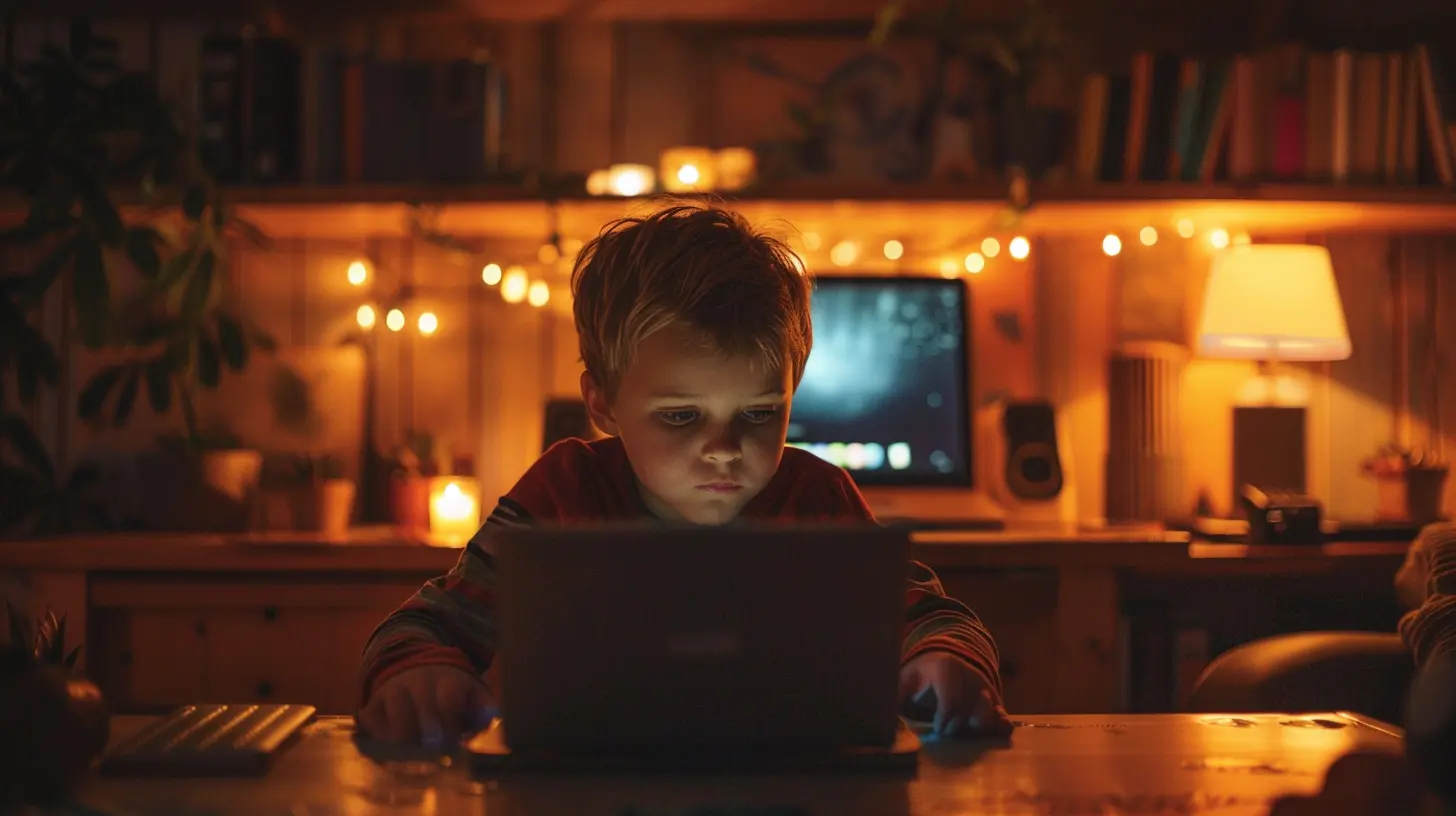Creating a Tech-Free Zone in Your Home: Why It Matters
2 July 2025
Let’s be honest—most of us are glued to our screens more than we’d like to admit. Whether it’s our phones, tablets, TVs, or laptops, technology seems to creep into every corner of our lives. And while it brings a world of convenience (seriously, how did we survive before online grocery delivery?), it also sneaks in a lot of noise, distractions, and sometimes, even a sense of disconnection—especially within our families.
That’s why creating a tech-free zone in your home isn’t just a cute idea—it’s a game-changer. It can bring more peace, stronger bonds, and even better sleep. So, if you're feeling like your family's glued to their screens more than each other, stick with me—we're going to unpack exactly why tech-free zones matter and how you can create one that works for your family.
Why Tech-Free Zones Are More Than Just a Trend
You’ve probably heard the term “tech-free zone” thrown around a bit—maybe on Instagram or a parenting podcast. But this isn’t some fleeting trend that’ll vanish by next summer. It’s actually one of the most powerful tools modern parents can use to bring balance back into the home.The Reality of Screen Overload
Let’s face it—screens are addictive. Think of them like potato chips. It’s hard to stop at one. A five-minute scroll turns into an hour-long rabbit hole. And while a little screen time isn't the enemy, too much can seriously mess with our attention spans, mental health, and relationships. Especially for kids, who are still developing emotionally and socially.The Connection Disconnect
Ironically, the more connected we are online, the more disconnected we can become at home. You know those moments when everyone’s in the same room, but no one’s actually together? Eyes down, thumbs tapping, and silence filling the air. That’s what screens can do—they pull us away from real-time interaction, even with the people we love the most.Creating a tech-free zone gives your family the space to reconnect—without the buzzing, pinging, and scrolling.
What Is a Tech-Free Zone, Really?
Now before you start picturing some futuristic room completely sealed off from Wi-Fi, let me put your fears to rest. A tech-free zone doesn’t have to mean banning technology altogether. You’re not starting a digital detox commune here!It simply means designating specific areas (or times) in your home where screens are put away and real-life connection takes the lead. It could be your dining room, the kids’ bedrooms, or even a cozy little corner in the living room where board games and books are the stars of the show.
The Benefits of Creating a Tech-Free Zone
Okay, so now that we’ve covered the “why,” let’s talk about the perks. Because trust me—there’s a treasure chest of them.1. Better Family Bonding
When screens are off, conversations happen. Jokes are shared. Eye contact returns. You start to hear about your child’s day not in a rushed, one-word answer but in full, animated stories. Everyone begins to feel seen again.2. Improved Sleep (Yes, Really)
Blue light from screens messes with melatonin levels, making it harder to fall and stay asleep. Creating a no-tech rule for bedrooms or cutting screens an hour before bed can dramatically improve everyone’s sleep quality—even yours.3. Encourages Creativity and Imagination
When kids don’t have screens to fall back on, they get creative. Suddenly, cardboard boxes turn into castles, LEGO bricks into cities, and living rooms into dance floors. Giving them time and space away from tech fosters problem-solving and imagination.4. Boosts Mental Health
Constant notifications and the pressure to be "liked" online can spike anxiety—especially for teens. A tech-free zone offers a sanctuary where kids (and adults) can unwind without the digital pressure.5. Sets Healthy Habits for Life
Kids learn by example. When they see you putting down your phone to play Monopoly or chat over dinner, they learn that people come before screens. These habits can stick with them well into adulthood.
Where to Create a Tech-Free Zone
Not sure where to start? You don’t have to turn your whole house into a screen-free monastery. Start small and be strategic.1. The Dining Area
This is the easiest and most impactful place to start. Make it a rule: no phones at the table. Meals are one of the rare times everyone’s gathered, so protect that space fiercely.2. Bedrooms
Keep bedrooms sacred, especially for kids. Banishing screens from the sleeping area can help them wind down more naturally and prevent late-night scrolling marathons.3. The Living Room (or a Corner of It)
This might seem like a tall order, but even designating a tech-free part of the living room can work wonders. Add a bookshelf, a comfy rug, maybe a puzzle table—make it inviting and screen-free by design.4. The Car
How many times do we sit in silence or with earbuds in during car rides? Make the car a screen-free conversation starter. It’s amazing how much kids will open up when they’re strapped in and undistracted!How to Make It Happen Without a Revolt
If your family is used to being plugged in 24/7, the idea of a tech-free zone might spark some resistance. That’s okay! Change doesn’t have to be dramatic. Here’s how to ease in without the eye-rolls and tantrums.1. Talk About the “Why”
Kids are more likely to cooperate when they understand a rule isn’t about punishment but about improvement. Explain how screen-free spaces help you all feel more connected, sleep better, and have more fun together.2. Lead By Example
No one likes a “do as I say, not as I do” situation. If you’re asking your kids to ditch the devices, you’ve got to do the same. Park your phone too, and be present in that space.3. Offer Screen-Free Substitutes
Set your tech-free zone up for success. Fill it with books, games, music, coloring supplies, or anything else that invites creativity and connection.4. Set Realistic Rules
Start with small increments. Maybe it’s tech-free dinners or no devices in the living room after 7 PM. Build from there. Consistency is more important than perfection.5. Make It Fun
Add a little flair to your new space! Maybe it’s a cozy nook with fairy lights and bean bags, or a game-night basket you pull out every Friday. The more fun the zone feels, the more natural it will be to unplug.Overcoming the “But I’m Bored!” Objection
Oh yes, this will come up. Especially with younger kids (and even spouses, let’s be real). But boredom isn’t bad—it’s actually the birthplace of creativity.When our brains aren't being fed non-stop entertainment, they start to wander, explore, and imagine. That’s where the magic is. So when you hear “I’m bored,” smile. You’re doing something right.
Tips for Sustaining the Tech-Free Habit
Creating a tech-free zone is the easy part—keeping it that way can be a bit trickier. Here’s how to make it stick:- Create visual reminders like “No Screens Here!” signs or baskets for phones.
- Praise the effort, not just the result. If your child resists but eventually joins in, acknowledge that effort.
- Stay flexible, don’t beat yourself up if a screen sneaks in. Life’s messy. Just refocus.
- Involve the whole family in planning. Let everyone pitch ideas for how to use the space.
- Celebrate the wins—whether it’s a deeper conversation or a new board game favorite.
Final Thoughts: It’s About Balance, Not Banishing
Look, we’re not saying you need to burn your devices in a backyard bonfire. Technology is amazing—it connects us, informs us, entertains us. But like anything, it’s best in moderation.Creating a tech-free zone gives your family a quiet corner in a noisy world. A place to reconnect, recharge, and remember what matters most—each other.
So go ahead, choose a spot, unplug for a bit, and see what happens. You might just find that the real magic happens when the screens go dark.
all images in this post were generated using AI tools
Category:
Tech And KidsAuthor:

Steven McLain
Discussion
rate this article
2 comments
Juno Peterson
Creating a tech-free zone is a beautiful way to nurture family connections and mindfulness. It’s vital for fostering deeper relationships and promoting a balanced lifestyle.
November 6, 2025 at 3:53 AM

Steven McLain
Thank you! I completely agree—tech-free zones are essential for strengthening family bonds and encouraging mindfulness.
Gunnar Weber
Establishing a tech-free zone fosters deeper family connections and encourages mindfulness. It allows for more meaningful interactions, reduces distractions, and promotes healthier habits, ultimately nurturing a balanced environment conducive to emotional growth and well-being in children.
July 5, 2025 at 4:47 AM

Steven McLain
Thank you for your insightful comment! I completely agree—creating a tech-free zone truly enhances family bonds and promotes mindfulness, fostering a healthier environment for emotional growth.


